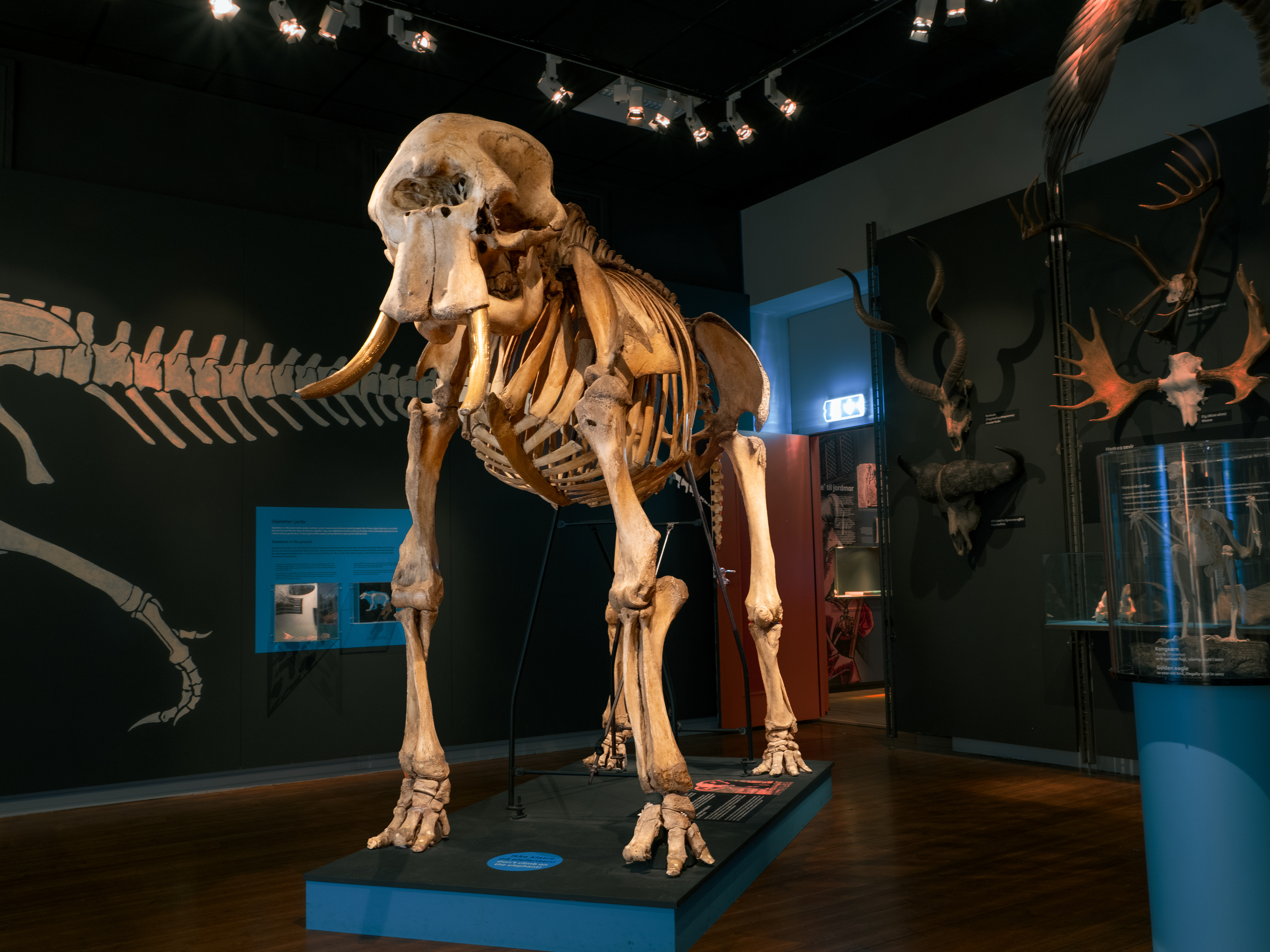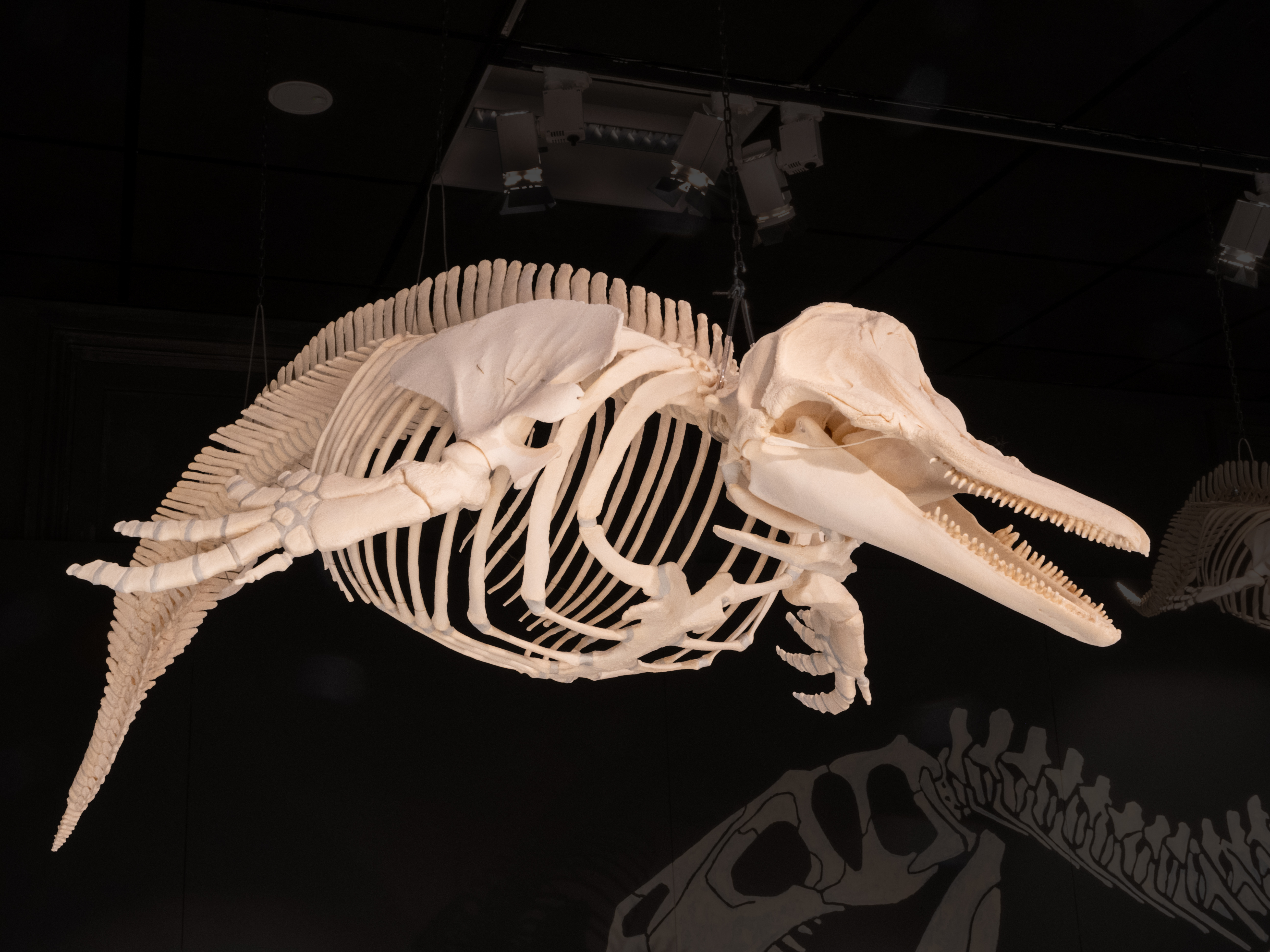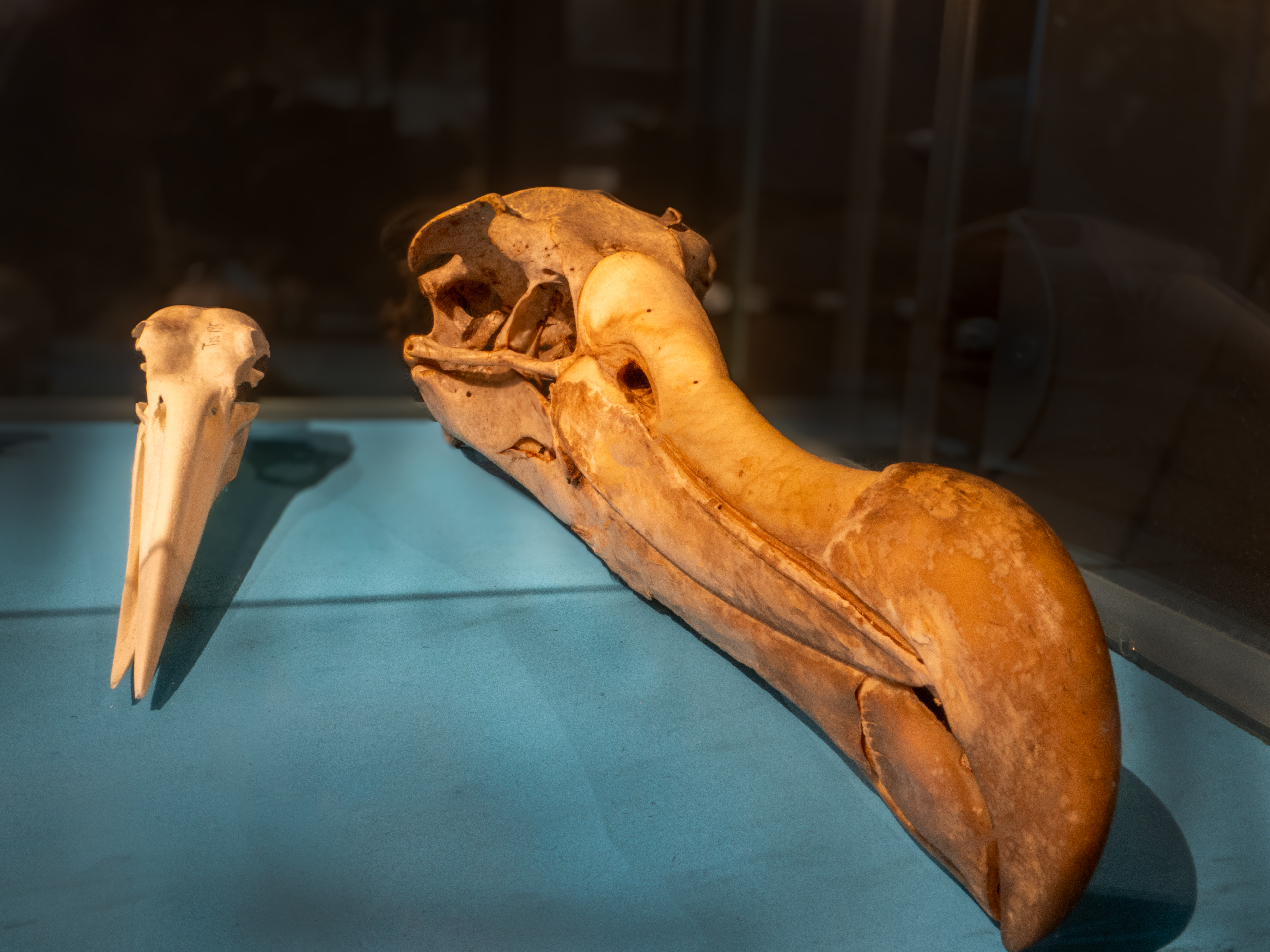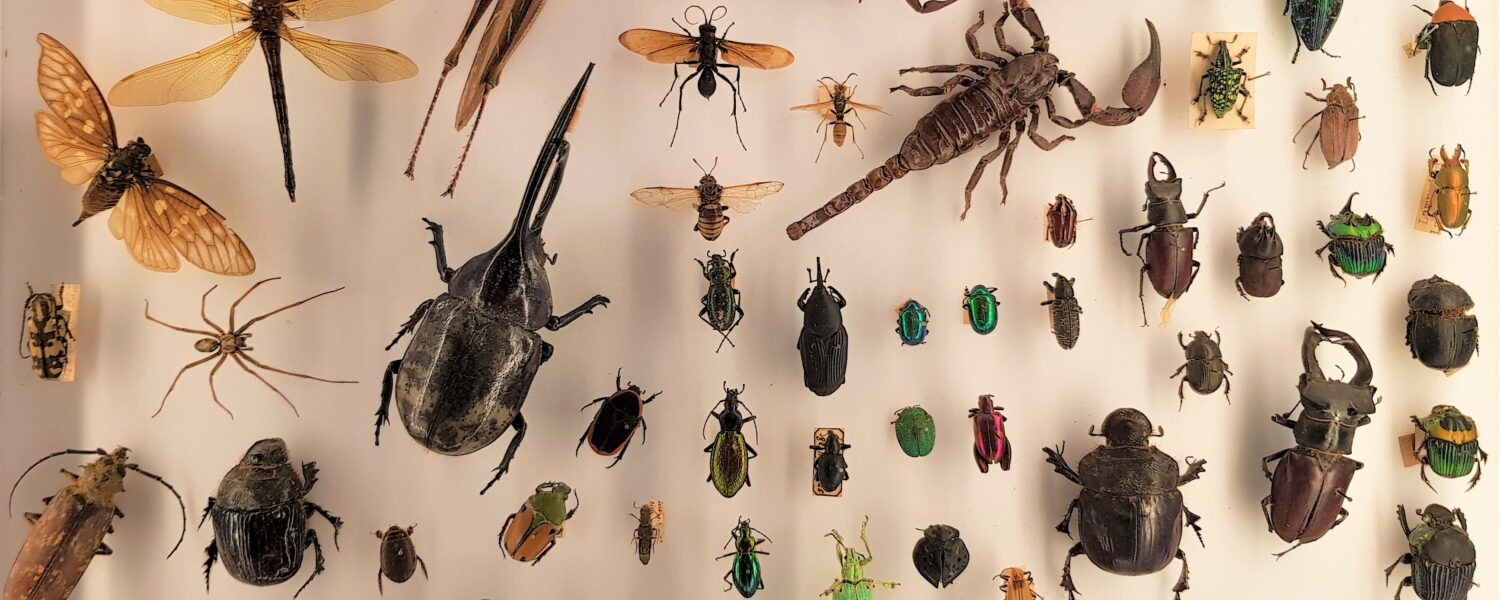To the bone
An exhibition about skeletons
A harsh characterization of a person is to describe them as “having no backbone”. In Norwegian, there is also a saying that “you have no bone in your nose”. Figuratively, these phrases describe a person who is cowardly or immoral. At the same time, it’s natural for most to have both a backbone and nasal bones.
How the skeleton looks can vary greatly among animal groups. Insects and mollusks have developed an exoskeleton. Vertebrates have developed an endoskeleton, which is common to everything from fish to great apes. The exhibition takes us into the museum's collection of skeletons, which encompass a multitude of different shapes, colors, and forms.
Skeletons have several functions. They provide body shape. They are made of robust, hard materials that can protect the whole organism or parts of it. They can heal if damaged. They can contain nutrients and stem cells. They serve as attachment points for muscles, tendons, nerves, etc.
Through evolution, animals are in a constant process of adapting to their surroundings and other animals that inhabit the same habitat. This has given rise to various uses of skeletal structures: as means of communication, armor, weapons, or decoration.





Photos: Main picture (bird skeleton) and ingress picture (insects closeup) by Anne Lise Norheim. The rest by MUST.
